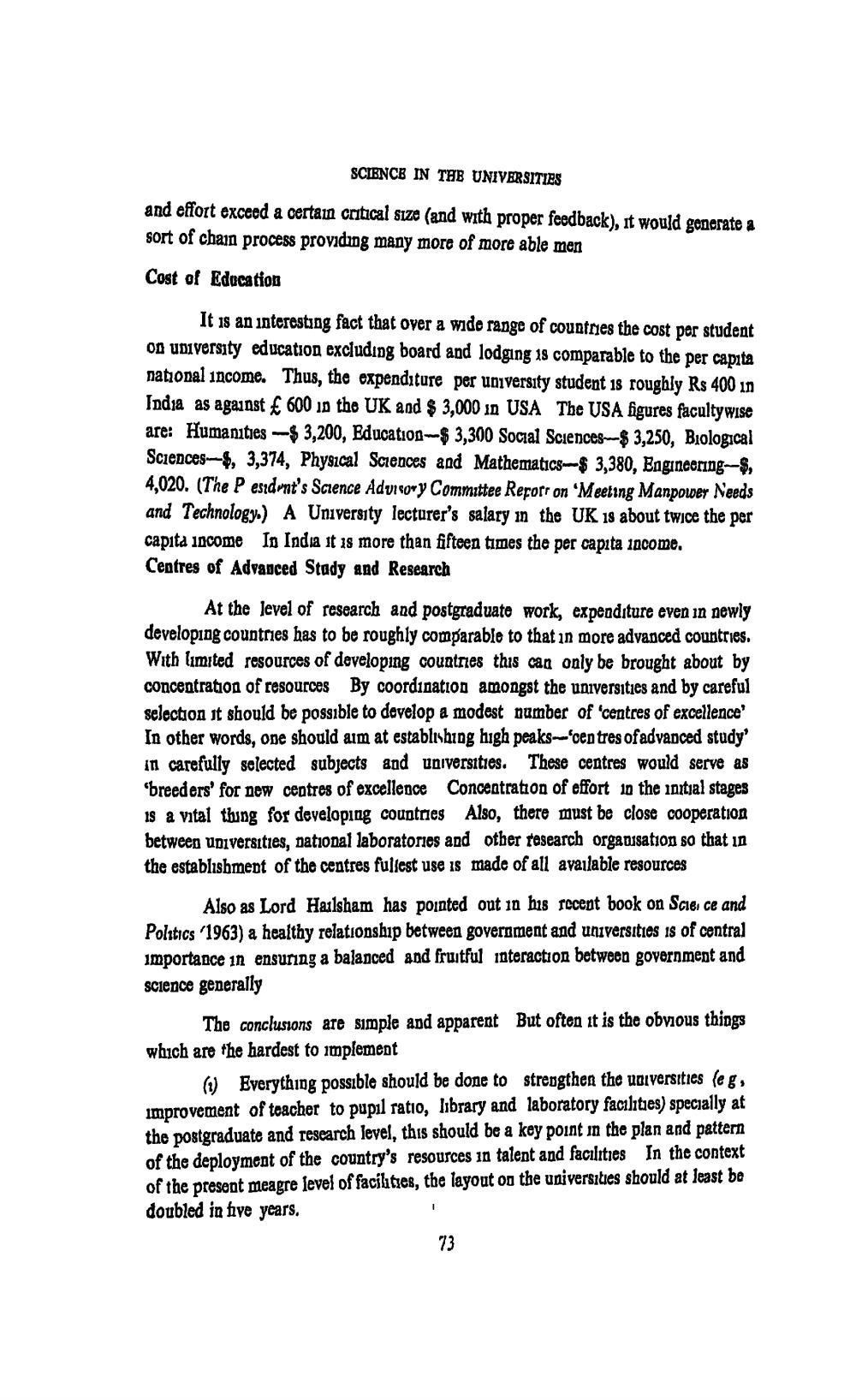________________
SCIENCE IN THE UNIVERSITIES
and effort exceed a certain critical size (and with proper feedback), it would generate a sort of chain process providing many more of more able men
Cost of Edocation
It is an interesting fact that over a wide range of countries the cost per student on university education excluding board and lodging 18 comparable to the per capita national income. Thus, the expenditure per university student 18 roughly Rs 400 in India as against £ 600 in the UK and $ 3,000 in USA The USA figures facultywise are: Humanities --$ 3,200, Education$ 3,300 Social Sciences --$ 3,250, Biological Sciences-4, 3,374, Physical Sciences and Mathematics--$ 3,380, Engineering--$, 4,020. (The P esident's Science Advisory Committee Reforr on 'Meeting Manpower Needs and Technology) A University lecturer's salary in the UK is about twice the per capita income In India it is more than fifteen times the per capita income. Centres of Advanced Stady and Research
At the level of research and postgraduate work, expenditure even in newly developing countries has to be roughly comparable to that in more advanced countries. With limited resources of developing countries this can only be brought about by concentration of resources By coordination amongst the universities and by careful selection it should be possible to develop a modest number of 'centres of excellence In other words, one should aim at establishing high peaks--'cen tres of advanced study in carefully selected subjects and universities. These centres would serve as 'breeders' for new centres of excellence Concentration of effort in the initial stages is a vital thing for developing countries Also, there must be close cooperation between Universities, national laboratories and other research organisation so that in the establishment of the centres fullest use is made of all available resources
Also as Lord Hailsham has pointed out 10 bis recent book on Scie, ce and Politics (1963) a healthy relationship between government and universities is of central importance in ensuring a balanced and fruitful interaction between government and science generally
The conclusions are simple and apparent But often it is the obvious things which are the hardest to implement
(1) Everything possible should be done to strengthen the universities (eg, improvement of teacher to pupil ratio, library and laboratory facilities) specially at the postgraduate and research level, this should be a key point in the plan and pattern of the deployment of the country's resources in talent and facilities In the context of the present meagre level of facilities, the layout on the universities should at least be doubled in five years.
73




